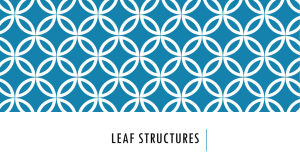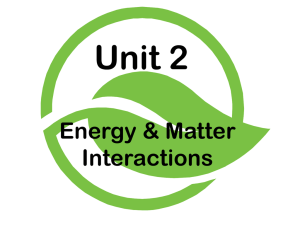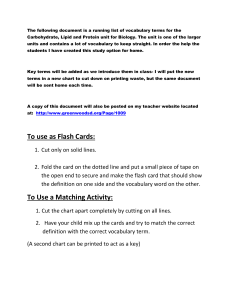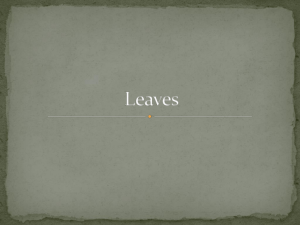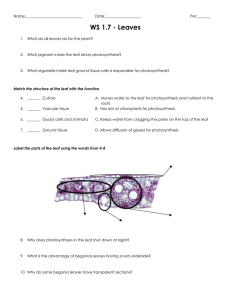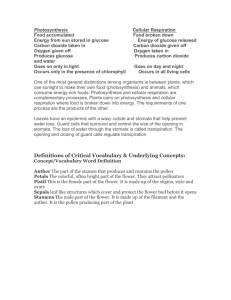Internal Parts and Function of Leaves
advertisement
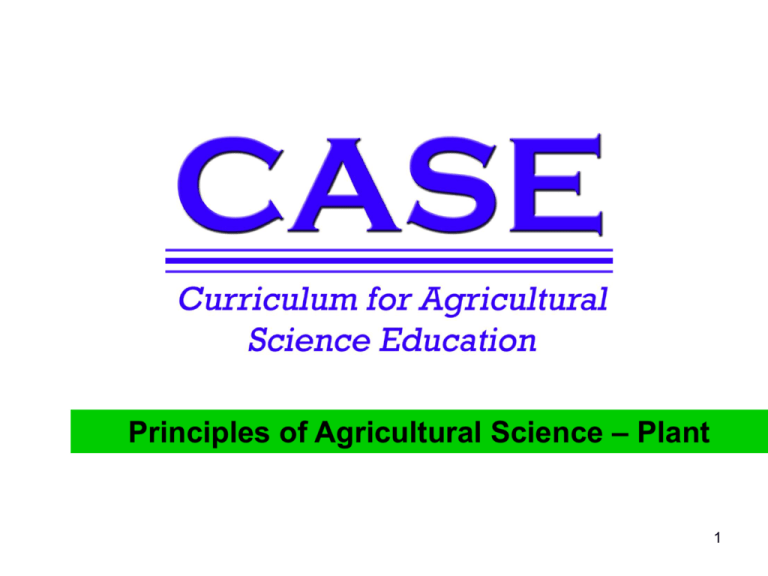
Principles of Agricultural Science – Plant 1 Principles of Agricultural Science – Plant Internal Parts and Function of Leaves Unit 4 – Anatomy and Physiology Lesson 4.4 Leave It to Leaves 2 What Leaves Do… Major functions that leaves provide are: Transpiration Photosynthesis Food storage 3 How the Leaf Does It… Parker, 2004 4 Internal Parts • Epidermis – Skin or barrier to prevent injury to leaf cells • Palisade cells – Cells primarily responsible for photosynthesis • Spongy mesophyll – Adds structure to leaf • Stomata – Pores allowing the plant to breath – Stomata are used to cool the plant through the process of transpiration 5 Solar Panels Leaves collect sun energy using chlorophyll found in plant cell organelles (chloroplasts) 6 Food Production Plants use the energy from the sun to convert water and carbon dioxide into sugar (glucose), water, and oxygen. Do you know what the process of making food in this manner is called? Photosynthesis 7 Food Storage Glucose produced during photosynthesis is stored in plant parts as an energy source to be available when needed. In the leaf, glucose is converted to cellulose and stored in leaf cells. 8 Future Lessons Related concepts to leaves will be explored in more detail: • Lesson 6.3 Lighting It Up will examine light and photosynthesis • Lesson 6.4 Chilly Lilies will examine temperature and transpiration 9 Reference Parker, R. (2004). Introduction to plant science (Rev. ed.). Clifton Park, NY: Delmar. Parker, R. (2010). Plant and soil science: Fundamentals and applications. Clifton Park, NY: Delmar. 10
